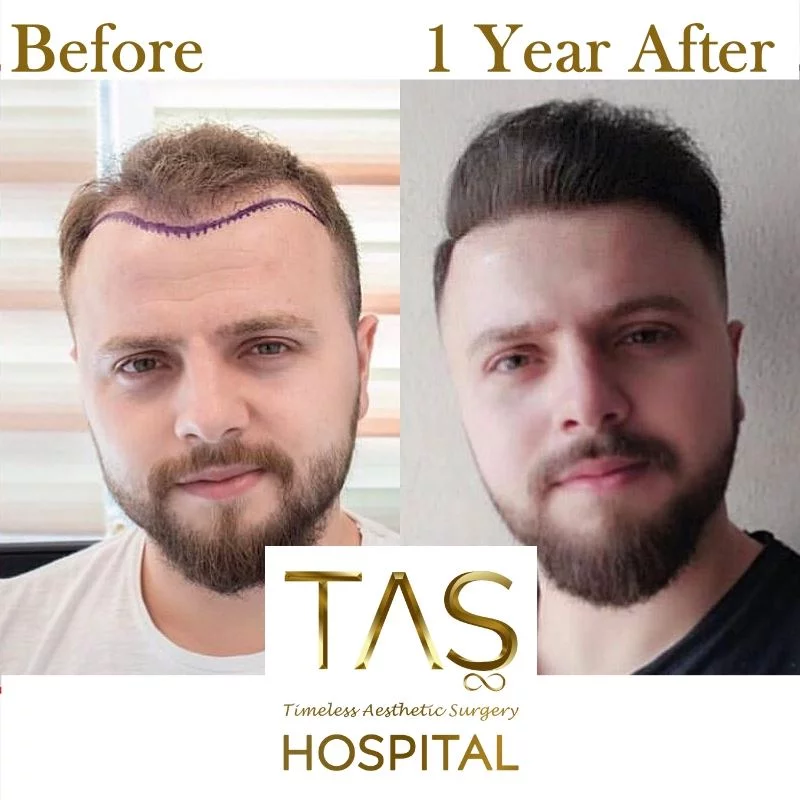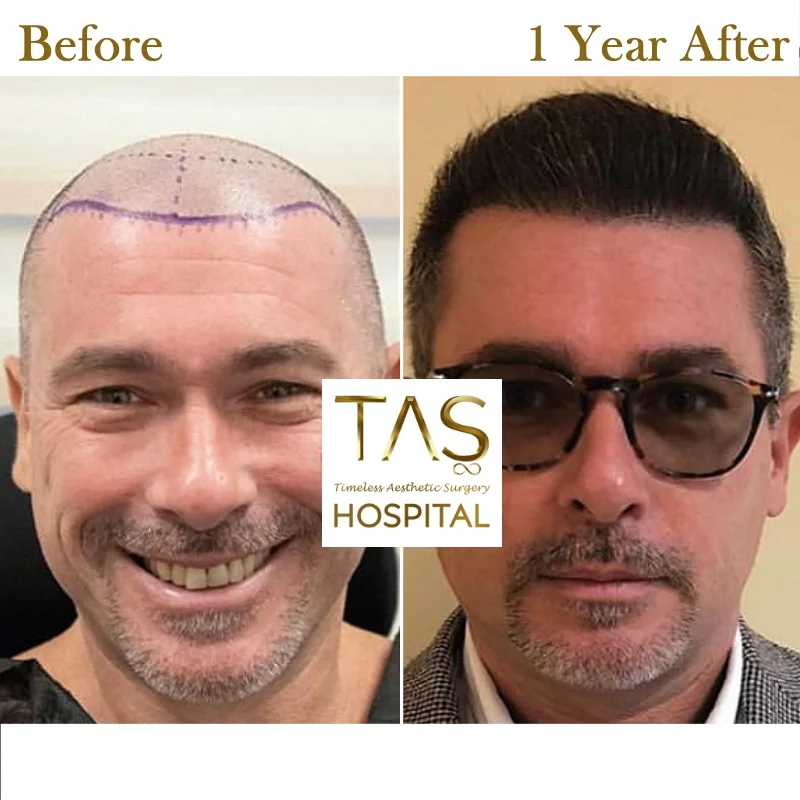
Hair Transplant Procedure Step By Step
Hair restoration treatment is one of the most preferred medical procedures nowadays. Hair transplant, which is preferred by many people, is actually a very simple and fast process contrary to popular belief. In a short time, the person can recover and return to their social life quickly after the hair transplant procedure. Thus, they can have an effortless and fast hair transplant experience.
In our blog post prepared for you, you will have the chance to get to know this medical procedure, which contributes significantly to a person’s social life and is a fast process, closely and obtain detailed information about the entire process at the same time. We wish you all enjoyable and good readings.
What Are the Steps of Hair Transplant Treatment?
Undoubtedly, the most curious part for us when we decide to have a hair transplant is the process of hair restoration treatment. The reason for this curiosity is that we may not have sufficient and accurate information about the hair transplant treatment process. Hair transplant treatment processes may vary because each hair transplant technique has its special procedures. The mentioned processes are FUE hair transplant and DHI hair transplant. Let’s examine all these processes together.
Steps of FUE Hair Transplant
FUE hair transplant, also known as follicular unit extraction and highly preferred by both women and men, is among the best hair transplant methods. This hair transplant method, which is frequently preferred and offers a permanent solution to the person, consists of seven effective steps. If we examine these mentioned FUE hair transplant processes in detail, we can say that it is as follows.
- Pre-operative Tests
The first step of FUE hair transplant, which is the extraction of follicular units, is the test stage, and it is one of the most critical stages of the FUE hair transplant process. Because, based on these tests, it is determined whether the person is the right candidate for FUE hair transplant. Thus, the person who will have hair transplant undergoes a healthy and effective hair transplant process. For this, the first test performed is the HIV test. The HIV test is a test that is crucial in the hair restoration process. The reason for this is that taking precautions accordingly based on whether the person is an HIV carrier or not is determined. This ensures the safety of both the patient and the healthcare personnel. Another test performed during hair transplant is the complete blood count and prothrombin time tests. These tests determine the risks of infection that may occur in the patient’s blood during the hair transplant process, and a process planning is made accordingly. At the same time, with the prothrombin time test performed, the time required for the patient’s blood to clot during the surgery is determined, and precautions are taken according to the risks that may occur during the operation.
- Determining the Most Appropriate Hairline
The process of determining the hairline, which is the second stage of follicular unit extraction, is one of the most important processes. This is because this process also determines how the hair will look after the hair transplant treatment. It also determines how the hair will suit the facial features. Therefore, it is necessary to be meticulous in this stage. It is essential to work with professional hair transplant doctors for this. In this step, the patient’s face shape is generally analyzed according to the golden ratio. Based on the analysis, the hairline is drawn according to whether the patient’s face shape is square, triangular or round. Many metrics are taken into account at this point. For example, it is planned in detail from the shape of the patient’s sideburns to the hairline on the temples. Thus, the most suitable and best hair transplant process tailored to the individual begins. If you want to experience a successful hair transplant procedure, it is essential to go through the first step of determining the hairline correctly. Otherwise, you may face hair transplant results that do not suit your face and do not look natural.
- Planning the Ideal Graft Count
After the hairline is determined, the third stage of the fue hair transplantation process, which is the ideal graft determination process, is started. In this stage, the amount of grafts needed for the area where the hair will be transplanted is determined. To do this, the density of hair loss in the area is carefully analyzed. Otherwise, transplanting a small amount of grafts to a dense area can result in sparse and unhealthy hair growth, or transplanting too many follicles to an area with less hair loss can create an artificial look. This can result in incorrect hair transplant results.
- Donor Area Analysis
Donor area analysis, which is the most important and delicate stage of hair transplantation, ensures that the hair transplant is planned correctly. During this process, it is determined from where the donor hair will be taken for the hair transplant procedure. Many factors should be taken into consideration and given importance during the donor area analysis, which is why it is important to work with expert doctors. The first step in determining the donor area is to analyze how many grafts will be needed for the transplantation. Based on this number, the donor area is determined. Generally, hair is taken from the back of the head, both for aesthetic and hair follicle density reasons. This is because the hair density in the back of the head is higher, and the hair follicles are stronger and thicker. Therefore, no matter how many grafts are needed, hair follicles are always taken from the back of the head. The quality of the hair follicles is also analyzed on the determined area. The main reason for this is to ensure that the hair follicles remain alive and grow for long periods of time. Therefore, donor area analysis is as important as the hairline design process. With the correct selection of the donor area, efficient hair follicles can be obtained, resulting in healthier and fuller hair.
- The Graft Extraction Process
The process of graft extraction, which may determine the overall results of the hair transplant process, is carried out after the analysis of the donor area and the determination of the ideal number of grafts. In this step, the donor area where the hair transplant will be performed is anesthetized locally. The process is not started until the donor area where the grafts will be taken is completely numb. When it is completely ensured that the area is numb, grafts (hair follicles) are carefully taken from the donor area with a micromotor head. The aim is to minimize any damage to the hair roots during the extraction process. Otherwise, if the hair roots are damaged, they cannot be used in the hair transplant process. Because damaged hair roots are not beneficial for the hair transplant process, and their proper growth and development cannot be observed. This process takes place between 4 to 6 hours, depending on the number of grafts. After the graft extraction process is completed, the hair is taken to a resting area and prepared for hair transplant.
- Greft Storage Process
The greft storage process is a crucial step in FUE hair transplantation, as it determines the overall success of the procedure and requires careful management. After the grefts are carefully extracted from the donor area, they are allowed to rest for a period of time to ensure that they can be nourished more effectively. During this resting period, the grefts are stored in a sterile environment, and hair transplant surgeons take every precaution to ensure their safety. The grefts are placed in a specially prepared solution, which typically contains a 0.9% sodium chloride solution or cell-preserving solutions, in order to promote their nourishment and prepare them for transplantation.
The grefts are stored at an appropriate temperature, typically between 2-8 degrees Celsius, to allow for optimal nourishment. Once the grefts have been nourished for a period of 4-6 hours, depending on the number of grefts involved, they are ready for transplantation. At this point, the surgeon begins the transplantation process, carefully implanting the grefts into the recipient area. By following this process, the surgeon can ensure that the grefts are healthy and will grow effectively, leading to a successful hair transplant procedure.
- First Results

After the extracted grafts are removed, the fue hair transplant process begins. This stage is the stage where the final touches are made. In this process, first, if the effect of local anesthesia has passed, the area to be transplanted is started by applying local anesthesia. Then, channels are opened with tools with micro motor heads to the depth and size where hair follicles can fit in the area where transplantation will be performed. It is very important that these channels are opened carefully and correctly. Otherwise, healthy data cannot be obtained. Hair grafts are placed into these channels opened with special tools according to the natural exit point of the hair. During the healing process of the placed grafts, the channels opened in the scalp begin to close and heal spontaneously. However, the redness and swelling that occur during this process are quite normal. There is no need to worry. During this process, the area where the hair transplant is performed is bandaged to prevent damage to the transplanted hair. Then, after 24-48 hours, the first care of the hair is performed under the supervision of a professional surgeon. It is better for your doctor to manage this process. Because the care stage is a subject that needs to be paid attention to. Therefore, we recommend that you do not do it on your own. To fully recover the area where hair transplantation is performed, you must follow the pills and warnings recommended by your doctor. Thus, your recovery process will be shorter. To obtain the first results in fue hair transplant, you need to wait for a period of 3-4 months.
Steps of DHI Hair Transplantation
- Pre-Procedure Tests
The most important stage of the DHI hair transplant process is the testing phase, which is carried out to ensure the proper progress of the hair transplant process and the safety of the patient. Through these tests, it is observed whether the patient is a suitable candidate for DHI hair transplantation. Thus, planning can be made for the best hair transplantation process. There are three main tests performed in this stage. The first is the HIV test, and the second is the complete blood count and prothrombin time tests. Both of these tests are important in the hair transplantation process. For example, in the HIV test, it is determined whether the patient carrying the HIV microbe or not. If the patient is a carrier, extra precautions are taken accordingly. Through these precautions, both the patient’s health and the health of the team performing the hair transplantation are guaranteed. Complete blood count and prothrombin time tests enable early detection of infections that may occur in the patient’s blood, and precautions are taken accordingly. In addition, it is ensured how long the patient’s blood coagulates. If the patient’s blood coagulates late, precautions or additional treatments are applied before the procedure.
- Determining The Best Hairline

The next stage of the DHI hair transplantation process, the hairline determination stage, is an important stage for the proper progress of the hair transplantation process. This stage determines how the transplanted hair will look and its compatibility with the face. For this reason, the hair transplant surgeon pays attention to many metrics and conducts a careful working stage. The hair transplant surgeon first analyzes the patient’s face accurately. In doing so, he pays attention to the golden ratio and determines whether the patient has a square, round, or heart-shaped face. Accordingly, he creates a hairline. If you want to have a correct and effective hair transplantation process, you must first have a natural hairline. For this, it should be carefully prepared from the shape of the temples to the hairline on the sides. Otherwise, you may face an unwanted and unnatural-looking hairline.
- Planning for the Ideal Graft Count
After determining the hairline, the next step in the most sensitive stage of the DHI hair transplant process is to determine the appropriate number of grafts for the hair transplant. In this step, the density of hair loss is analyzed in detail. Based on these analyses, the ideal graft count needed is determined in order to achieve the correct hair appearance. Otherwise, if the graft planning is incorrect, the result may be a sparse or excessively exaggerated hair transplant. In such a case, the desired efficiency is not achieved in the DHI hair transplant process.
- Donor Area Analysis
The fourth step in the DHI hair transplant process, the donor area analysis, allows for the hair transplant to be performed in the best and most accurate way possible. In this step, the area where the most appropriate hair follicles will be taken from the patient is determined. This determined area allows for sufficient and suitable grafts to be obtained for the hair transplant. When determining the donor area, many metrics are analyzed. For example, the number of grafts is primarily determined. Based on this determined number of grafts, the donor area for hair follicle removal is clarified. As a result of these analyses, the determined donor area is generally located in the back of the head, as the hair roots in this area are more dense, thick, and strong. Hair roots taken from the back of the head are analyzed in detail for quality, in order to obtain the most appropriate hair roots for achieving fuller and healthier hair.
- Extraction of Grafts
After the correct number of grafts have been planned, the most important step is the extraction of the grafts. This step will determine the results of the entire DHI hair transplant process. Before starting this step, the scalp is first numbed, and then the extraction process is initiated when the donor area is thoroughly numb. During extraction, hair follicles are taken from the donor area using a special punch tool. It is important to move slowly during this process because hair follicles are very delicate and can be easily damaged. If this happens, the efficiency of the hair transplant procedure may decrease, and positive results may not be observed. This process generally takes between 6-8 hours. The extracted grafts are then directly implanted into the area where the hair transplant will take place, using a punch tool. The area where the hair transplant is performed is left to rest, and during this time, the hair roots are lightly wrapped to allow for proper air circulation.
- Final Results
To observe the final results of DHI hair transplantation, a certain amount of time must pass. During this time, the first care of the transplanted hair area must be taken. It is recommended that this initial care procedure be performed by professional and expert physicians. Because the transplanted area is very delicate, it is necessary to be very careful and move delicately. After the initial care, medications prescribed by your doctor should be used and their instructions should be followed carefully. Although the final results of DHI hair transplantation vary depending on a person’s hair type, quality, and healing process, on average, the first results are obtained between 3-6 months.
If you want to have a comfortable and reliable experience during your hair transplant treatment Turkey process, you can contact our expert team.












